Planting Paradise – Is there an option?

Summary
A not insignificant development challenge in Southeast Asia is linked to the incredible diversity of life, both on land and in the sea. Continued and heightened international awareness of the rich fauna and flora and the rapid loss of the habitats that sustain them, places the region under a certain degree of scrutiny, fair or otherwise, as it strives to develop. What are the environmental costs to date and likely future costs of this development? To examine these issues the Malaysian State of Sabah is used with a focus on general trends and possible future scenarios, rather than exact detail. This State provides an example of transition from tropical forest to agricultural landscape, much of which has occurred within living history. While the economy of the Malaysian state of Sabah remains based on natural resource development and agriculture, what happens in these sectors strongly dictates land use patterns. Thus, it can be expected that further dramatic changes in land-use will take place in the coming decades. On the one hand the visible loss of forest habitat rich in biodiversity to agriculture in the form of oil palm plantations is of real national and international concern; on the other, it is the development and revenue generated from this land that has in part provided the economic security to better protect what remains – in the short term at least. As the State makes the transition from a natural resource based economy to a more industrialized one, a strong and diverse economy is essential in order to remove development pressures from the remaining non-performing forest areas. Plantation agriculture plays an important role here.
Introduction
The east Malaysia state of Sabah, former British North Borneo, takes up the northeast portion of the island of Borneo. It is bounded by Sarawak to the south-west and Indonesian Kalimantan to the south. The 73,619 km2 land-mass is made up of an impressive assortment of physical landscapes by any comparison. Over three quarters of the human population inhabit the coastal plains where the major urban centers are to be found. The interior region remains sparsely populated with only the occasional settlement and smaller town. At one time the State was almost entirely covered by forests of which today about 60 to 70 per cent remains. The area covered with forest, and especially the type of forest cover, however, has changed in the last decades and will probably continue to change. The most notable trend is the dramatic reduction of undisturbed forest. Recognizing the value of forests as a natural asset, par- ticularly with regard to the growing importance of tourism, (3.5 per cent of State GDP in 2009, of which a good portion is probably nature based), the State Government has set the ambitious target of maintaining at least 55 per cent of the land under permanent state control and forest cover – the state Permanent Forest Reserve. This paper examines some of issues, the driving forces of change, that the State must face in order to meet this target. This target is set against a backdrop of a rapidly changing landscape, the dynamics of which, if uncontrolled, can be simplified by the following pattern; from undisturbed forest to disturbed forest, thereafter disturbed forest to plantation. There are calls from the international development community to halt this process of forest conversion, or at least slow it down in order to exert greater control over the process – make it more sustainable. The International Finance Corporation, under the World Bank, recently suspended approval of new palm oil development investment in September 2009, pending a review of practices in the sector. The findings of this review and the final strategy will be announced later this year. While this is not rele- vant to the domestic situation in Sabah, affected parties argue that foreign direct investments to develop the palm oil industry have played an important part in fuelling the economic growth and freedom in develop- ing nations and that in the last 30 years, oil palm plant- ing investment has increased stability and prosperity in Indonesia and Malaysia. And that halting investments in this sector might actually bring about greater harm to the forests in the long run. Whilst many of the most rich and most accessible forests have long since been cleared, those remaining are subject to an ever increas- ing number of development restrictions. While the maintenance of forest cover is desirable from an envi- ronmental perspective, the dynamics of socio-economic development challenge this on the ground. The popula- tion of Sabah is still in exponential growth and has the potential to double every twenty five years or so (Fig. 1).
Forest change in Borneo
Most of the world’s cropland was once forest; and as cropland and other human activities have expanded, so the forest has contracted and it has done so at an accelerating rate during the last two centuries (Mather & Chapman, 1995). Clearance for agri- culture has probably been the main reason for deforestation throughout history. In recent times however, such forest clearance is more controversially associated with the tropics.
The humid tropical environment of Sabah’s terrestrial environment is char- acterized by a complete range of for- est habitats, ranging from extensive tracts of mangrove and other coastal swamp forests, though lowland rain- forest, to the sub-alpine dwarf forest of Mount Kinabalu (4095 metres). It is this diverse array of habitats that pro- vides a home for the tremendous bio- diversity found in the State; the sur- vival of which is closely linked to the continued existence of this forest cover. Malaysia is identified as one of the world’s twelve mega-diversity areas with extremely rich biological resources. Sabah is home to several critically endangered species, including the Borneon Orangutan (Pongo pyg- maeus), the Sumatran Rhincorous (Dicerorhinus sumatrensis) and the Borneon Pygmy elephant (Elephas maximus borneensis). In Sabah, the Sumatran Rhino is clinging to survival with maybe only as few as 20-25 indi- viduals remaining in the wild. The low- land rainforest of northeast Borneo is one of only two places, the other being on the north of Indonesia's Sumatra island – where orangutans, elephants and rhinos still co-exist and where forests are currently large enough to maintain viable popula- tions.
Until fairly recently the impact of man and agricultural systems on the Island of Borneo was limited. Human arrivals to the island were few in num- ber and arrived from the sea. Settlements were restricted to coastal or riparian zones whilst the then seem- ingly impenetrable interior provided little attraction. Forests, formidable in size could not be cleared on any sig- nificant scale and could only support low numbers of forest dwellers. The human mark on the landscape in the region only became noticeable with the increasing presence of the Europeans in the nineteenth century. European planters, initially unaccus- tomed to the tropical environment suf- fered considerable setbacks as land became degraded by soil exhaustion and erosion. At the turn of the 1900s Sabah saw the establishment of the first agricultural estates, with crops such as tobacco and coconut palm and later rubber; and for the first time this led to the felling of the forests on a large scale. Timber production itself made little impact on the forest before 1945. With the arrival of new technol- ogy in the form of mechanized means of road clearing and hauling, the tim- ber industry developed rapidly (Berger 1990). During the late 1950s the demand for timber to reconstruct the recovering post war economies of the world fueled the development of the market for tropical logs (Collins, Sayer and Whitmore 1991). The timber booms that occurred in the 1960s and 1970s were not a deliberate policy fos- tered within the Malaysian states. External economic events main- streamed the momentum to exploit the situation and the institutional capacity and policies were not in place to cope with such events (Kumar 1986). Organizational structures fitted colonial plans to meet local agricultur- al and timber needs; clearly there was some catching up to do.It is only today that the tools are available to introduce controls. These includemar- ket driven certification systems and ecological knowledge, introducedlong after the bulk of the forest resource has gone. The timber boom reached Sabah in the 1960s following the exhaustion of the resource in the Philippines. The process progressed to Indonesia in the 1970s.
Although the region once housed a significant portion of the world’s tropi- cal forests, it is now evident that land use change has left little in the way of untouched forest outside of the pro- tected area system. Countries that par- ticipated early on in the logging boom are now actively involved in plantation programmes.
The forest setting
Within this changing landscape a key element of the continued conservation of biodiversity is the system of protect- ed areas, that ideally should adequate- ly cover the full range of habitats. It has been suggested by the interna- tional conservation community that if every nation reserved about 10 per cent of national land area for inclusion into a protected area system, this would be sufficient to ensure the sur- vival of a broad range of biodiversity. Today in Sabah, a total of 1,2 million hectares of land has protected area status, equating to about 16 per cent of the total land area (Fig. 2).
Protected areas
Beyond the protected area system, the Permanent Forest Reserve or Estate, comprises of 3.6 million hectares of land permanently reserved by Government for commercial and non- commercial forest services. This amounts to about fifty per cent of land area.
The commercial, or production, for- est portion of the reserve is subject to selective harvesting but continues to provide an important habitat and some protection for many species. It is the fate of these forests that will prob- ably determine the large scale survival for a broad range of species and biodi- versity.
Forest areas outside of the perma- nent reserve are witnessing rapid land use change and contested land use claims.It is upon these forests that most of the deforestation debate is focused. But even in these areas, poli- cy developments increasingly provide for improved environmental planning procedures to better maintain some ecological function within the agricul- tural landscape setting. And it is here where some of the biggest conserva- tion challenges occur; at the local level agricultural zoning is in conflict with biodiversity resources and the ranges of some species.
Nowhere is this more obvious than the lowlands of eastern Sabah, once home to some of the most produc- tive forest lands in the region, it now hosts land zoned as most suitable for agriculture. Expansion of palm oil plantations has contributed to increasing fragmen- tation of the remaining natural forest, with reduc-tion in size and increased spatial dis- tance between individual forest pock- ets.
Animal movement, in the absence of suitable corridors between fragments, is impeded and is leading to human – wildlife conflict. State land-use policy and planning has long since recog- nized that sufficient areas should be set aside for environmental purposes while the rest would be for plantation. However, early planning efforts did not anticipate the movement of ele- phants, rhinos and orangutans, so leg- islation was not geared towards the type of land-use planning and wildlife corridors being proposed today. While some of the larger plantations are able to set aside areas for conservation, it is now recognized that the State needs to develop a plan to accommodate such wildlife movements.
It is a huge responsibility for Sabah to ensure a healthy co-existence between development and the state’s wildlife. In the short term, if it is possible to maintain protection for the existing protected area system then the goal to allocate and maintain more than 10 per cent of land area for nature conservation is eminently winnable. In the long term, the concern remains that chang- ing socio-economic conditions may yet threaten the protected area network.
The economic setting
Sabah has a small and open economy that has been susceptible to external cyclical swings. It is dependent on the export of its major primary commodi- ties which constitute about 70 per cent of State Gross Domestic Product (GDP).
From the 1970s onwards growth was sustained at a rapid pace through the use of the timber resource. In the mid 1980s Sabah derived nearly 80 per cent of state revenue from forest activ- ities and although forests remain important, it is clear that the boom years are over.
Recognising the gradual depletion of forest resources, the Government has embarked on various reforestation pro- grammes to ensure sustainability and is actively promoting the production of higher value added wood-based products. Sustainable levels of revenue from forest products appear to be leveling out at about 10 per cent (Fig.3).
More recently, large scale oil palm and cocoa plantations and the extraction of crude petroleum has succeeded the timber industry; the agriculture sector is now the backbone of the State's economy and contributes about 35 per cent of the State Gross Domestic Product. Petroleum products provide about 30 per cent of domestic GDP; reserves are estimated to last 40 years or more. Despite vulnerability, Sabah’s economy has continued to grow in real terms. Buoyant economic activities in the region may have indirectly spilled over and contributed to the State’s economic growth, but the main contributors to growth in the 1990s have been the agriculture and manu- facturing sectors with oil palm and its products dominating; and the area of land being converted to this use is ascending gradually. Large tracts of land outside of the forest estate have been converted to oil palm plantations (See Plates 1-4, Page 38). And this structural shift is expected to continue in the years ahead, albeit at a reduced rate. Currently 2.1 million hectares of land is zoned for agriculture, to be converted from forest to a different land use, of which today about 1.4 million hectares has already been con- verted to oil palm (Figs. 4 & 5).
The fate Sabah’s forests does not lie with the 2.1 million hectares of land currently assigned for agriculture, but rather with the future of the perma- nent forest estate and protected area system. In the short term these forests may be secure; but it is the long term that is of concern. With increased levels of development land is increasingly valued by utility and at a practical level this will be the amount of revenue the land can generate. It is an untenable that such large areas of land generate little income in the long run unless other values and sources of revenue are realized.
In terms of land use competitiveness, the forestry sector has to compete with agriculture. Based on the current scenario, average annual productivity of the oil palm industry is about 18 times more productive per hectare than the forestry sector. It is also worth noting that many historical develop- ment models show that government ownership of lands, in particular the forestry sector, decline with time.
A land ready for oil palm
While the physical features of Sabah’s landscape provide much beauty, the many hills and ridges represented a barrier to the expansion of settlements and development of land for agricul- ture.
To prepare land for plantation at an industrial scale requires mechanised land clearing and a crop that can endure on often quite poor soils and conditions in the newly cleared areas. As a plantation species, the oil palm does well in growing environments found in the lowlands humid tropics, 15° North or South of the equator - with an evenly distributed rainfall of 1,800 to 5,000 mm per year. Globally 13.5 million hectares of oil palm exist, primarily in South East Asia, in Malaysia and Indonesia, of which these two countries today produce 90 per cent of the world’s palm oil. It is an efficient crop, yielding up to ten times more oil per hectare than soy- abeans, rapeseed or sunflowers. On five per cent of the world’s vegetable- oil farmland it produces 38 percent of the output. Any substitute would need more land. While the rapid expansion of palm oil plantations makes sense from an economic point of view, envi- ronmental groups regard it as a dan- ger not only to Asian wildlife but also to the health of the planet. Such mat- ters are increasingly difficult for buyers of palm oil to ignore. ‘Companies are changing their buying policies in response and paying more attention to the distant reaches of their supply chains. Environmental responsibilities have never been more public.’ (The Economist 2010)
Sustainable oil palm?
The rapid expansion of plantations has naturally put pressure on the environ- ment and on societies where the palm is grown. While better managed plan- tations and oil palm smallholdings serve as models of sustainable agricul- ture, in terms of economic perform- ance as well as social and environmen- tal responsibility, there is concern that not all palm oil is being produced sus- tainably. Since 2004, concerns about palm oil have been contained within an organization called the Roundtable on Sustainable Palm Oil (RSPO). The RSPO involves growers, processors, food companies, investors and NGOs. With a vision to ensure that palm oil contributes to a better world and a mission to advance the production, procurement and use of sustainable oil palm products, the RSPO is having a noticeable impact throughout the sup- ply chain (http://www.rspo.org) . It is increasingly difficult to proceed with a ‘business as usual’ scenario. However, better environmental and social stan- dards come with a cost and while larg- er operations with the capacity to bring about change are able to do so, the challenge of moderating small- holders remains significant. Smallholders in Sabah today number about 30,000 with 154,000 hectares of land planted.
Discussion Future options
In the short to medium term, it is not unreasonable to expect that the agri- cultural development requirements, currently provided for, will exceed the 2.1 million hectares. The conservation question concerns - where will be the source of this additional land? With much of the forest resource base gone or altered what are the development options that remain? Under law, the Permanent Forest Estate, except under exceptional local circumstances, will remain as such.This excludes agricul- tural crops such as oil palm. It is intended that these forests will be managed under some form of long term sustainable forest management, whereby trees are selectively harvest- ed, based on a cycle determined by their capacity to regenerate. Such cycles allow for selective harvesting every forty to sixty years or so. It should be noted that tropical manage- ment systems, although theoretically sound, have yet to stand the test of time. Whilst fifty per cent of land pro- viding 80 per cent of state GDP is reasonable – the same land area produc- ing only 10 per cent is less so. For these lands to remain under forest management, continued innovation is required to secure or increase produc- tivity. Sabah has been an active and welcoming host for a broad range of forestry projects. New global service initiatives may provide an opportunity here, but it is also worth noting, that Sabah, a pioneer in the carbon busi- ness has yet to receive any financial benefits from its efforts. Despite 18 years of involvement, none had actual- ly materialized into ‘real’ carbon rev- enue. In all likelihood it can be expect- ed that lands will eventually start to be excised from forestry ownership and converted to agricultural or other titles.
Plantation agriculture
Is it possible therefore to present the case of plantation agriculture as being an important development partner for conservation success? In part this suc- cess may be attributed to the buffer- ing role that oil palm has played in the State economy. In any national set- ting, for the formal protected area to be secure, requires economic security. Only once this achieved can conserva- tion efforts extend beyond protected
areas and into the landscape setting. Economic security also provides for political security. This in turn provides for more effective policy and planning which are essential to guide and coax industry through this period of envi- ronmental change. Conservation man- agement is not the core business of commercial agriculture. Sabah has also maintained an open door approach to engagement with national and inter- national - government and non-gov- ernment initiatives. Although it has not been smooth sailing all the way, what is now emerging from this engagement may be considered a model framework for sustainable development. Points from the above discussion may be extended across the humid tropics where emerging palm oil producing markets will lead to an acceleration of demand for forest con- version to feed the expansion of oil palm plantation. The Amazon basin, the largest global continuous rainfor- est system, is under acute and immi- nent threat, owing to such expansion plans with over 2,000,000 km2 consid- ered suitable for oil palm cultivation (Butler & Laurance, 2009). With the appropriate policies and planning tools in place, positive outcomes are possible.
Conclusions
The right balance? There is a com- plex relationship between environ- ment and development. Population pressure and the demand for land is a powerful agent of change. The links between environment, econo- my and society – each of which is highly complex, must be considered and acknowledged. Opponents of agricultural development need to consider this question; ‘at what level of development should countries be asked to hold economic develop- ment?’ A scenario of limited or zero economic growth set against a back- ground of rapid population growth does not bode well for the environment and is as damaging as bulldoz- ers themselves. What hope does it offer the peoples? The alternative – sustainable options need to be suffi- ciently robust to see through times of crisis, lest reserved forests and protected areas fall under renewed cycles of pressure. Sabah has main- tained an open door approach to engagement with national and inter- national government and non-gov- ernment initiatives. Although it has not been smooth sailing all the way, what is now emerging from this engagement may be considered a model framework for sustainable development. Planting paradise or at least part of it, may be necessary in order to maintain it.
References
Berger, R. Malaysia’s Forests: A Resource Without a Future. Chichester. Packard Publishing Limited, 1990.
Collins, N. M., J.A. Sayer and T.C. Whitmore. The Conservation Atlas of Tropical Forests: Asia and the Pacific. New York: Simon and Schuster, 1991 Kumar, R, The Forest Resources of Malaysia: Their Economies and Development. Oxford: Oxford University Press, 1986
Mather, AS and Chapman, K (1995) Environmental Resources, Longman Scientific, England.
‘The other oil spill’ The Economist June 26th- July 2nd pp 73-75
Rhett A. Butler & William F. Laurance 2009. Is oil palm the next emerging threat to the Amazon?. Tropical Conservation Science Vol. 2 (1):1-10. http://www.rspo.org/ accessed 9 August, 2010
Download pdfFigures
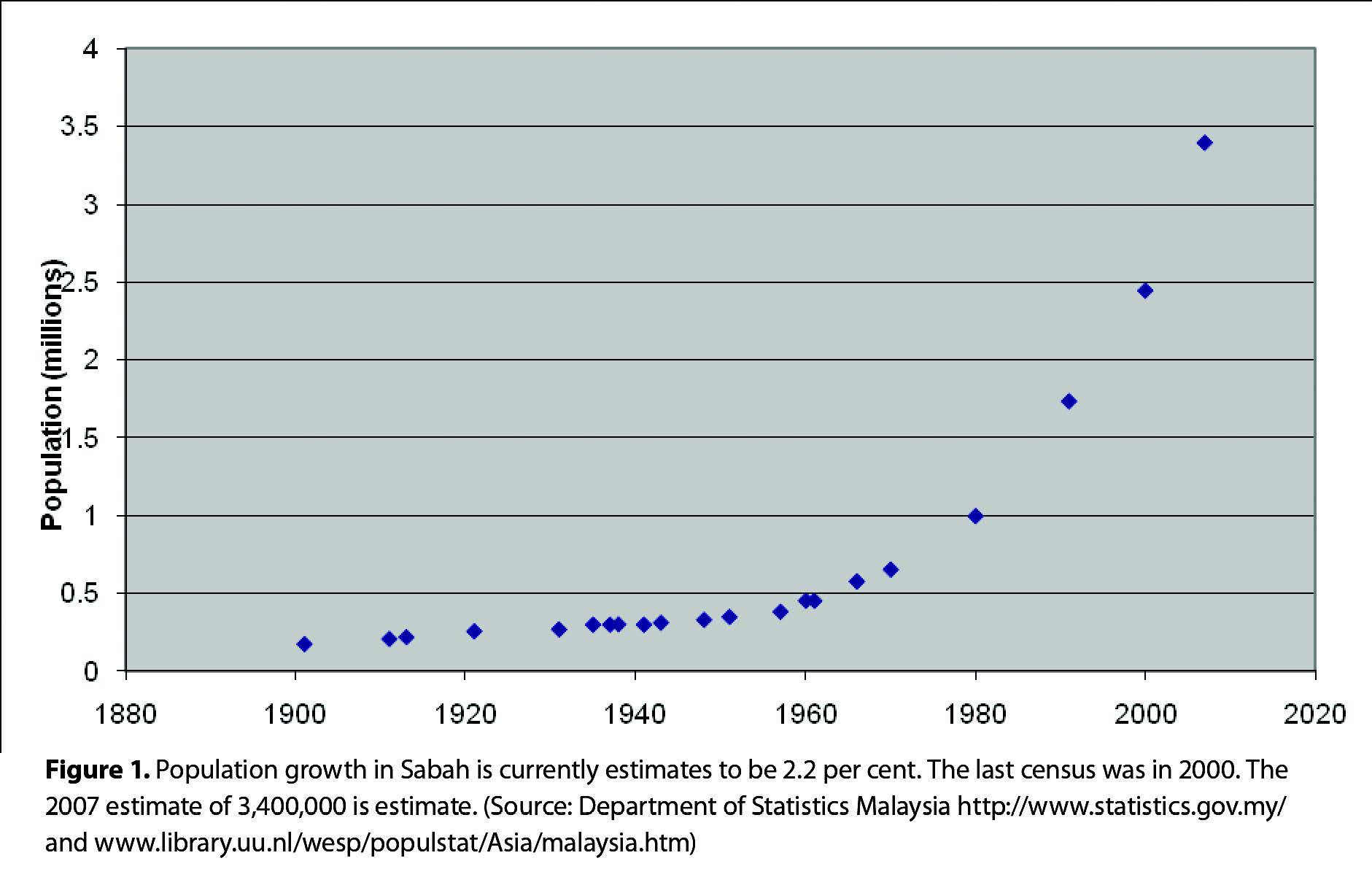
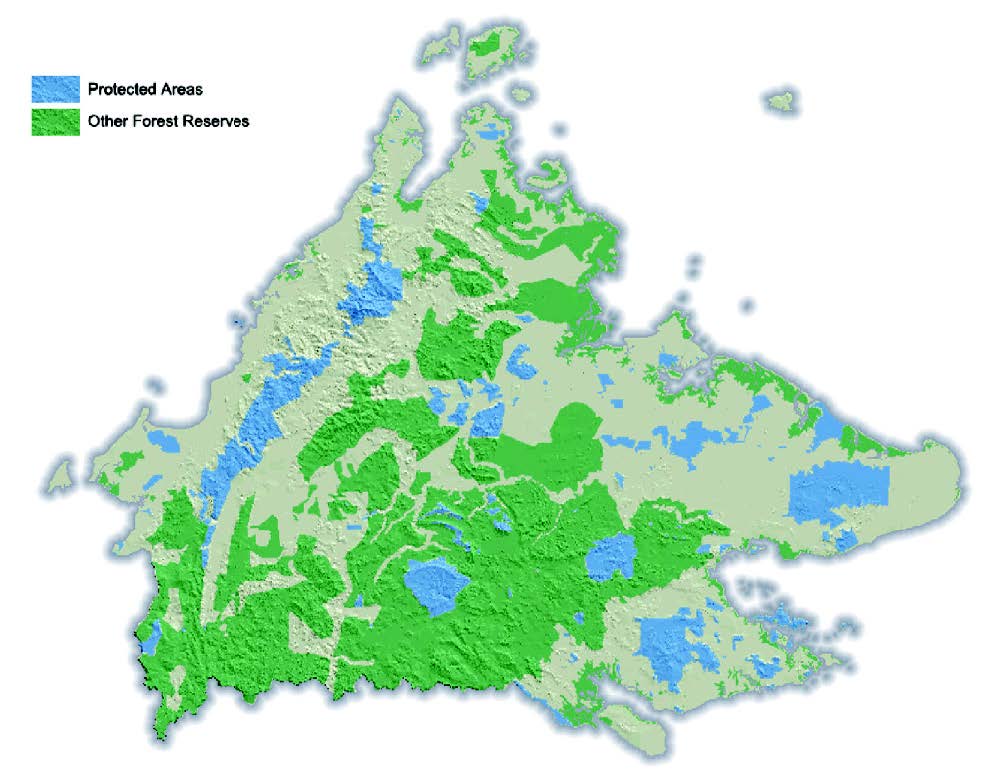
Figure 2
Protected areas and other forest reserves in Sabah. Sabah is about 400 km across at its widest point. The southern border abuts Kalimantan, and on the south west it abuts Sarawak. Source: Adapted from Sabah Forestry Department (2001).
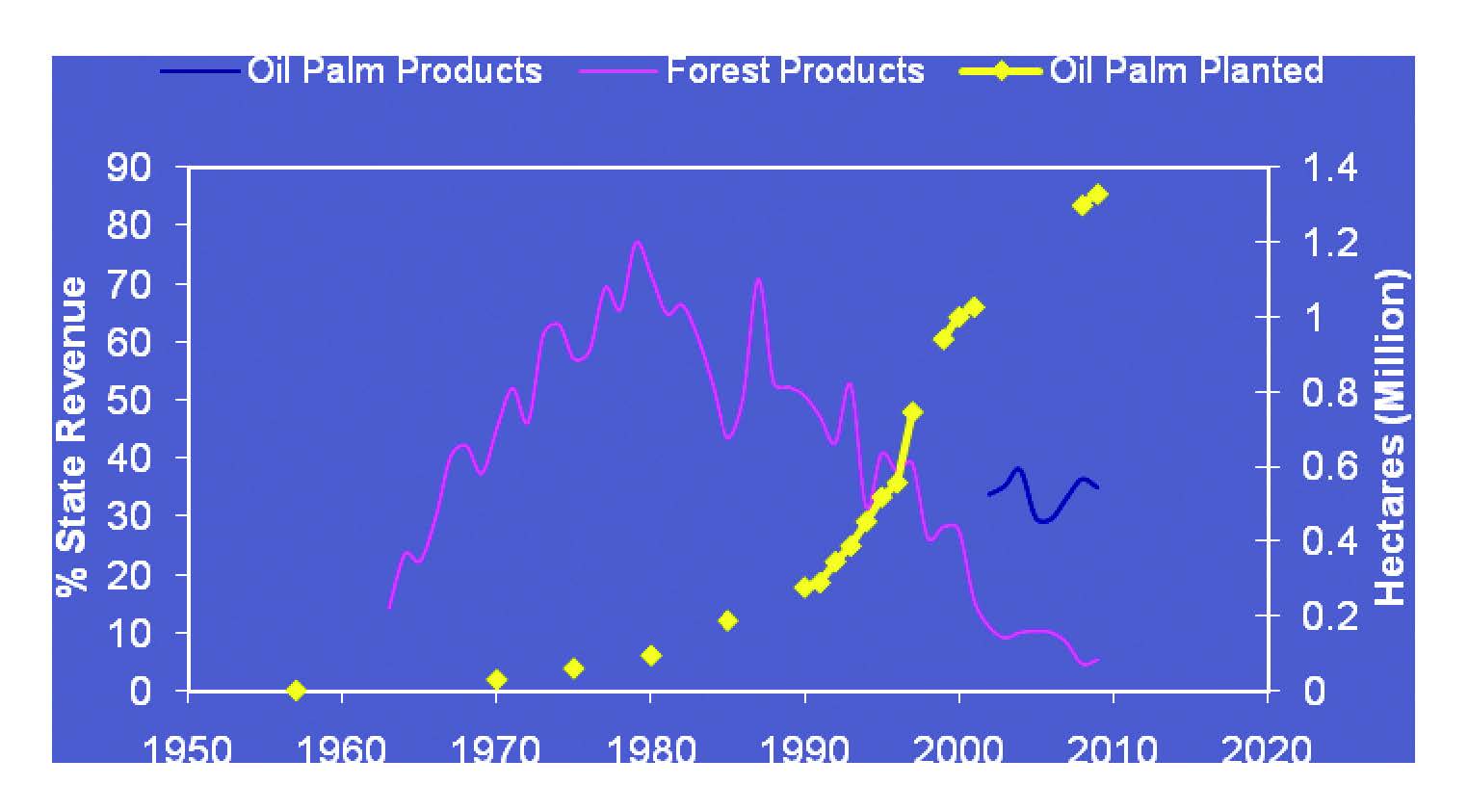
Figure 3
Forest products revenue, oil palm products revenue and planted area of oil palm in Sabah.(Source: PORLA/Sabah Department of Agriculture 2010; State Ministry of Finance; Annual Bulletin of Statistics, various years, Sabah Forestry Department, 2010, Institute of development Studies, Sabah 2010.
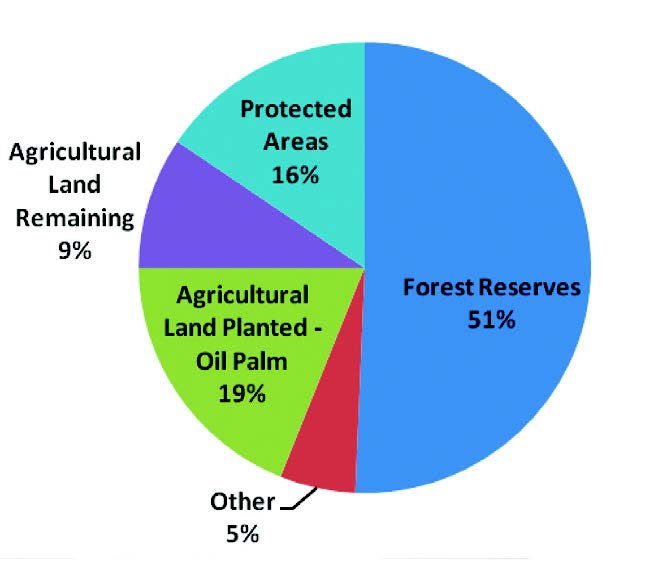
Figure 4 – Current land use in Sabah (approximate areas). Protected areas also comprise of some forest reserves.
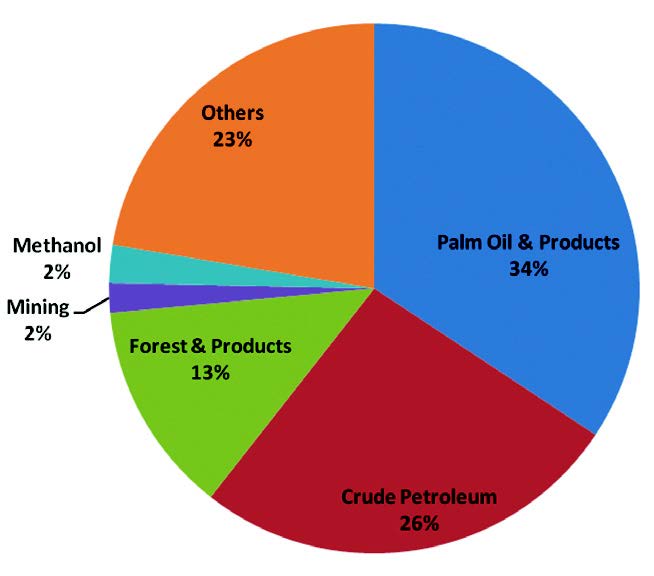
Figure 5 – Figure 5 Percentage of revenue generated from major export commodities. Institute of Development Studies, Sabah 2010

